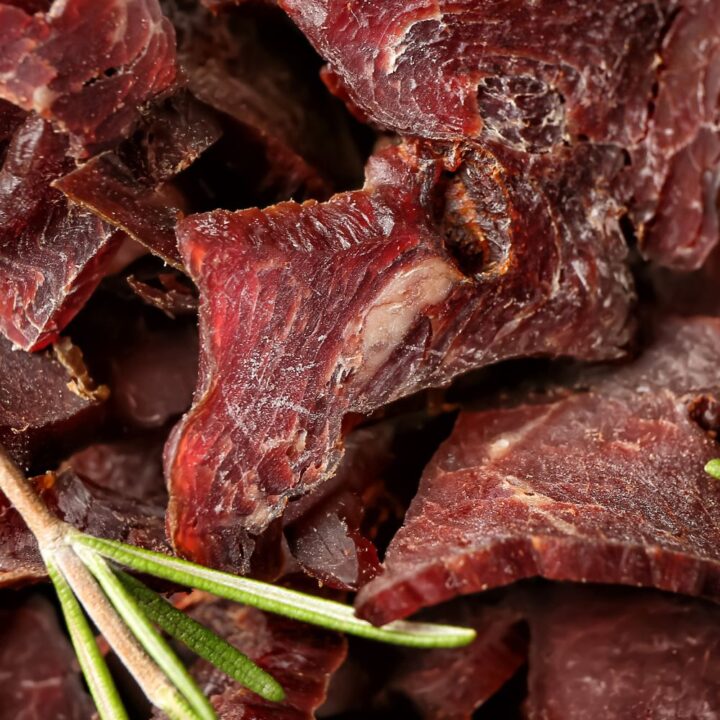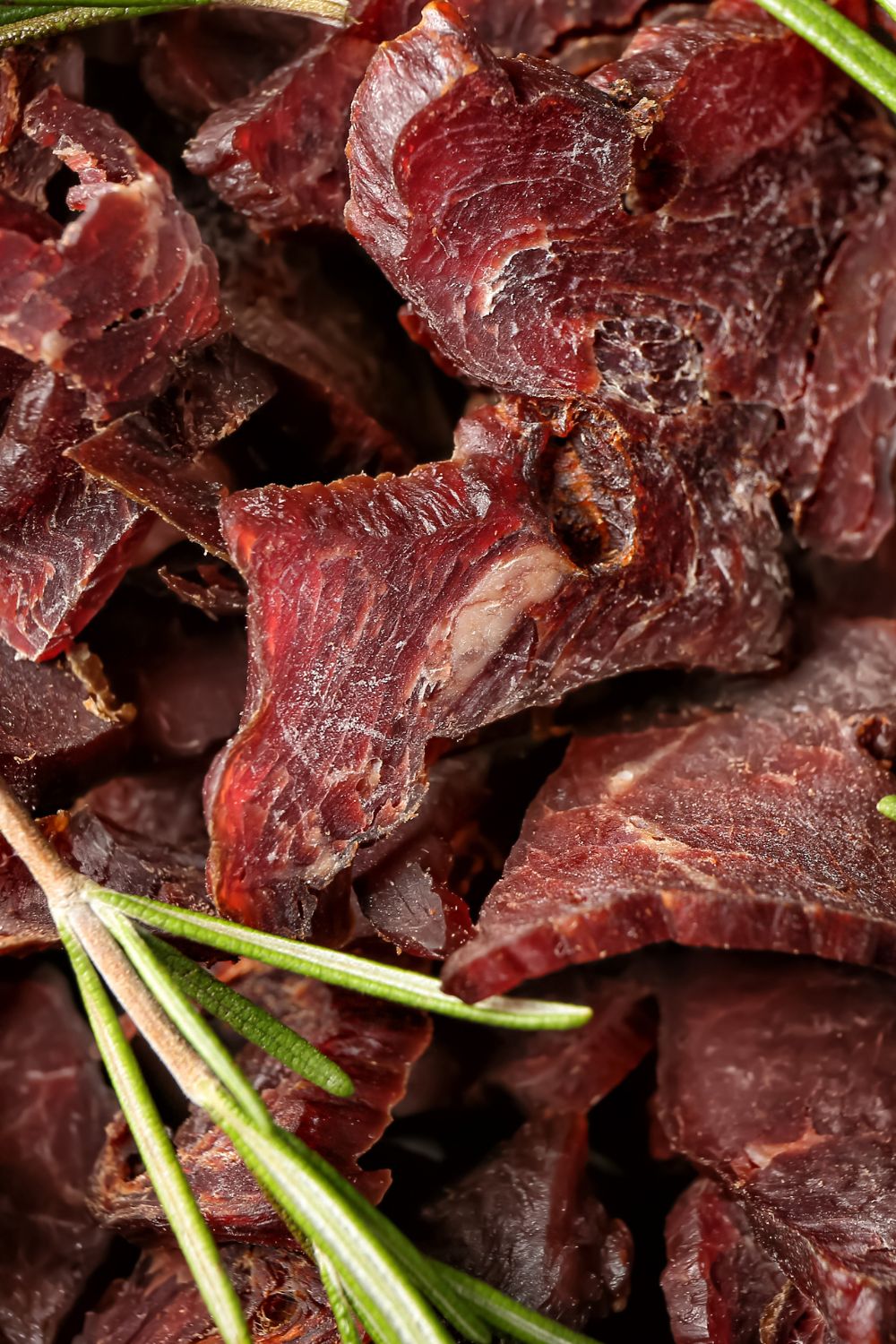Making your own deer jerky at home can be a rewarding experience, especially when you want to avoid additives like soy sauce. This deer jerky recipe without soy sauce allows you to savor the natural flavors of the meat while creating a delectable snack that’s perfect for any occasion. Whether you’re heading out on a hike or just enjoying a quiet evening at home, this jerky is sure to satisfy your taste buds.
In this article, I’ll share a detailed recipe, tips, and everything you need to know about crafting your own deer jerky without using soy sauce. Let’s dive into the flavorful world of homemade jerky.
Deer Jerky Recipe Without Soy Sauce
Creating delicious deer jerky without soy sauce is quite simple and requires just a few basic ingredients. The absence of soy sauce allows the rich taste of the deer meat to shine through, complemented by spices and seasonings that enhance its natural flavors.
Ingredients
- 2 pounds of lean deer meat (backstrap or hindquarter)
- 1/4 cup apple cider vinegar
- 1 tablespoon Worcestershire sauce (if avoiding soy sauce entirely, you may skip this)
- 1 tablespoon garlic powder
- 1 tablespoon onion powder
- 1 tablespoon ground black pepper
- 1 tablespoon paprika
- 1 teaspoon cayenne pepper (optional, for heat)
- 1 tablespoon brown sugar (or honey for a natural sweetener)
- 1 teaspoon salt (or to taste)
Equipment You’ll Need
Before you begin, gather the following equipment:
- Sharp knife for slicing the meat
- Large mixing bowl for the marinade
- Resealable plastic bags or glass containers for marinating
- Dehydrator or oven (set at a low temperature)
- Storage containers or vacuum sealer for storing the jerky
Step-by-Step Instructions
Now that you have all your ingredients and equipment ready, let’s get started with the steps to create your deer jerky:
Step 1: Prepare the Meat
Begin by trimming any excess fat from the deer meat, as fat can spoil faster and affect the shelf life of your jerky. After trimming, slice the meat into thin strips, about 1/4 inch thick. It’s easier to slice when the meat is slightly frozen, so consider placing it in the freezer for about an hour beforehand.
Step 2: Make the Marinade
In a large mixing bowl, combine apple cider vinegar, Worcestershire sauce, garlic powder, onion powder, ground black pepper, paprika, cayenne pepper, brown sugar, and salt. Stir well to create a uniform mixture.
Step 3: Marinate the Meat
Add the sliced deer meat to the marinade, ensuring each piece is fully coated. For better flavor penetration, cover the bowl with plastic wrap or transfer the meat and marinade to resealable plastic bags. Let it marinate in the refrigerator for at least 6 hours or overnight for best results.
Step 4: Dehydrate the Jerky
After marinating, remove the meat from the refrigerator and let it drain. If using a dehydrator, arrange the strips on the dehydrator trays, ensuring they are not overlapping. Set the dehydrator to 160°F (71°C) and dry the meat for 6 to 8 hours, checking periodically until it reaches the desired texture. If using an oven, place the strips on a baking sheet lined with parchment paper and set the oven to the lowest temperature, leaving the door slightly ajar for airflow.
Step 5: Cool and Store
Once dehydrated, let the jerky cool completely before storing it. You can store your deer jerky in an airtight container or vacuum-sealed bags to keep it fresh. Properly stored, it can last up to 1 month at room temperature or longer in the refrigerator or freezer.
Nutrition and Health Benefits
Homemade deer jerky is not only delicious but also a healthy snack option. Here’s a quick breakdown of the nutritional benefits:
- High in protein: Deer meat is an excellent source of lean protein, making it an ideal snack for those looking to build muscle or maintain a healthy diet.
- Low in fat: When trimmed properly, deer meat contains less fat than many commercial beef jerky options.
- Rich in vitamins and minerals: Deer meat provides essential nutrients like iron, phosphorus, and B vitamins.
Tips for Making the Best Jerky
Here are some tips I’ve learned through my jerky-making journey:
- Experiment with spices: Feel free to customize the seasonings to suit your taste. Adding smoked paprika or different herbs can yield unique flavors.
- Slice against the grain: This technique makes the jerky easier to chew.
- Monitor the drying process: Check the jerky regularly to avoid over-drying.
Common Mistakes to Avoid
- Not marinating long enough: Allowing the meat to absorb the flavors is crucial for delicious jerky.
- Using fatty cuts of meat: Always choose lean cuts to prevent spoilage.
- Overcrowding the dehydrator: Ensure good airflow for efficient drying.
Frequently Asked Questions
Can I use other meats for this recipe?
Yes, you can substitute deer meat with other lean meats like elk, turkey, or beef. Just adjust the marinade to suit the type of meat you choose.
Can I make this jerky in the oven?
Yes, you can definitely use your oven to make deer jerky. Set the oven to the lowest temperature and leave the door slightly open for ventilation.
How should I store the jerky?
Store your jerky in an airtight container or resealable bags. It can last up to a month at room temperature, but refrigeration can extend its shelf life.
Is this jerky healthy?
Yes, homemade deer jerky is generally healthier than store-bought versions, as you control the ingredients and can avoid preservatives and excess sodium.
Can I freeze deer jerky?
Yes, freezing deer jerky is a great way to extend its shelf life. Just ensure it is stored in an airtight container or vacuum-sealed to prevent freezer burn.
What is the ideal thickness for jerky slices?
A thickness of about 1/4 inch is ideal for jerky slices. This thickness allows for proper drying without becoming too tough.
How long does it take to dehydrate jerky?
It typically takes 6 to 8 hours to dehydrate jerky in a dehydrator at 160°F (71°C), but this can vary based on meat thickness and humidity.
Can I add sugar substitutes to the marinade?
Yes, you can use sugar substitutes like stevia or erythritol if you prefer a lower-calorie option, but keep in mind this may alter the final flavor.
Does jerky need to be refrigerated?
While jerky can be stored at room temperature for a month, refrigeration or freezing is recommended for longer storage to prevent spoilage.
What flavor variations can I try?
You can experiment with different flavors like teriyaki, chili lime, or even sweet and spicy blends. Just adjust the ingredients accordingly to match your taste preferences.
Is it safe to eat jerky if it’s still somewhat soft?
While jerky should be somewhat firm and dry, a little flexibility is normal. However, if it feels sticky or moist, it may not be safe to eat.
In conclusion, this deer jerky recipe without soy sauce is a fantastic way to enjoy a delicious, protein-packed snack while avoiding any unwanted additives. I hope you find joy in making your own jerky and experimenting with flavors that suit your palate.

Deer Jerky Recipe Without Soy Sauce
Creating delicious deer jerky without soy sauce is quite simple and requires just a few basic ingredients. The absence of soy sauce allows the rich taste of the deer meat to shine through, complemented by spices and seasonings that enhance its natural flavors.
Ingredients
- 2 pounds of lean deer meat (backstrap or hindquarter)
- 1/4 cup apple cider vinegar
- 1 tablespoon Worcestershire sauce (if avoiding soy sauce entirely, you may skip this)
- 1 tablespoon garlic powder
- 1 tablespoon onion powder
- 1 tablespoon ground black pepper
- 1 tablespoon paprika
- 1 teaspoon cayenne pepper (optional, for heat)
- 1 tablespoon brown sugar (or honey for a natural sweetener)
- 1 teaspoon salt (or to taste)
Instructions
Step 1: Prepare the Meat
Begin by trimming any excess fat from the deer meat, as fat can spoil faster and affect the shelf life of your jerky. After trimming, slice the meat into thin strips, about 1/4 inch thick. It’s easier to slice when the meat is slightly frozen, so consider placing it in the freezer for about an hour beforehand.
Step 2: Make the Marinade
In a large mixing bowl, combine apple cider vinegar, Worcestershire sauce, garlic powder, onion powder, ground black pepper, paprika, cayenne pepper, brown sugar, and salt. Stir well to create a uniform mixture.
Step 3: Marinate the Meat
Add the sliced deer meat to the marinade, ensuring each piece is fully coated. For better flavor penetration, cover the bowl with plastic wrap or transfer the meat and marinade to resealable plastic bags. Let it marinate in the refrigerator for at least 6 hours or overnight for best results.
Step 4: Dehydrate the Jerky
After marinating, remove the meat from the refrigerator and let it drain. If using a dehydrator, arrange the strips on the dehydrator trays, ensuring they are not overlapping. Set the dehydrator to 160°F (71°C) and dry the meat for 6 to 8 hours, checking periodically until it reaches the desired texture. If using an oven, place the strips on a baking sheet lined with parchment paper and set the oven to the lowest temperature, leaving the door slightly ajar for airflow.
Step 5: Cool and Store
Once dehydrated, let the jerky cool completely before storing it. You can store your deer jerky in an airtight container or vacuum-sealed bags to keep it fresh. Properly stored, it can last up to 1 month at room temperature or longer in the refrigerator or freezer.
Nutrition Information:
Yield: 4 Serving Size: 1Amount Per Serving: Calories: 80Carbohydrates: 2gNet Carbohydrates: 2gFiber: 0gSugar: 1gSugar Alcohols: 0gProtein: 10g

